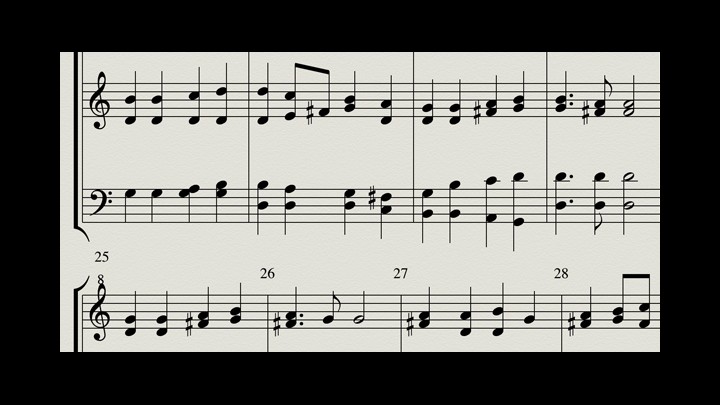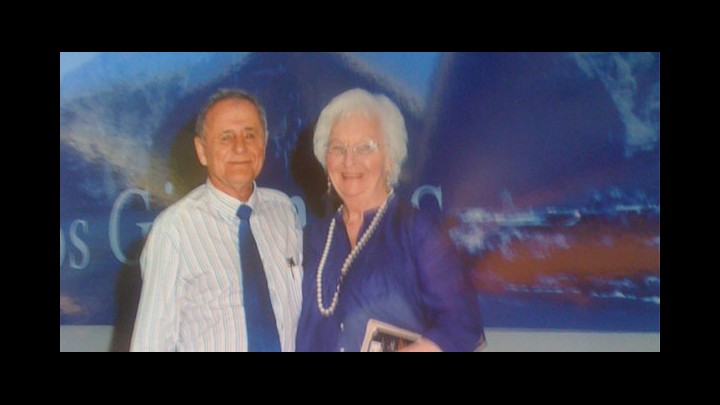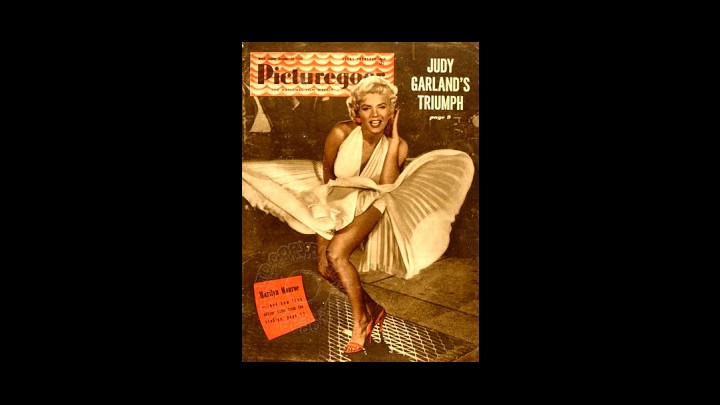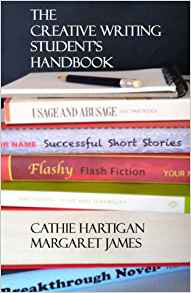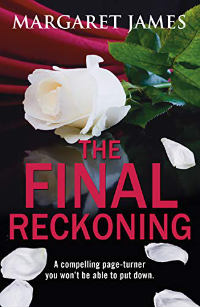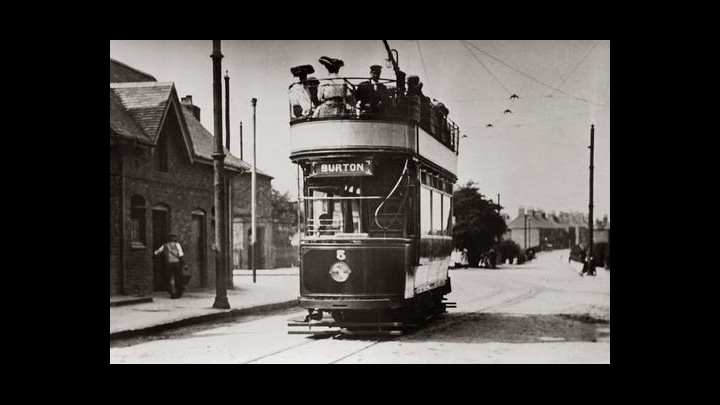
Do you remember taking the tram to school?
Not one of the sleek modern single-deck machines, but old double-deck vehicles which swayed and ground their way along the streets. With only a few exceptions they ran at fairly modest speeds but with a certain sense of irresistible force. A tram running down the middle of the road was not something fragile motor cars argued with, not least because trams were not able to get out of the way. They were firmly attached to the rails they ran on, and where the rails went, the tram car obediently followed.
This limitation was a primary cause of the trams’ demise. It occupied the centre of the road and their trackway had to be kept clear at all times which meant that other road users were seriously hampered in where they could go. When other users were still scarce that did not matter, but taking up that much of the road was rapidly becoming untenable even back on the 1950’s when the trams went out of service.
With their origins in technology shared with railway trains they were built solidly with a steel underframe. The older ones had wooden bodies, but in the 1930’s lightly panelled steel bodies came into vogue and the last designs were moving towards monocoque designs not unlike the newest buses of the time. Apart from the upper deck being enclosed the design varied little over the life of trams as a primary means of transport.
Some late designs had central closing doors but for most people their experience of a tram was of getting on at an open end and the choice of climbing the steep semi-spiral stair or of pulling open a door into the lower saloon. The driver spent his life in the other end, whichever that might be as virtually all trams had driving controls at both ends and the end areas doubled as driver’s cab and passenger entry.
At the terminus the driver simply walked from one end to the other taking his keys with him, while the conductor flipped the back of the seats to allow passengers always to face the direction of travel. It was the conductor’s job to turn the current collector pole round unless the tram was fitted with a pantograph, then off the tram went in the opposite direction. And yes, trams had conductors as a matter of course, taking fares, issuing tickets and generally keeping control of their vehicle.
These conductors were predominantly male but in both world wars women moved into the role and after the second war, continued in the job until trams ceased to be. The Glasgow ‘clippies’ were a particularly tough resourceful example of the breed who exercised an iron grip on their charges. Running on steels wheels on steel rails the old trams were capable of carrying an enormous overload without stress and memories of the rush hour was of squeezing into a crowd as bad as any tube train today.
The other predominant memory is of the smell. Trams had a distinctive smell, not necessarily unpleasant but quite different to any other one might encounter. It is hard to define, being a mixture of electric current being burnt, the leather of the seat covers and especially in the old wooden-bodied cars, a contributing pong from the wood. It was much more marked in wet weather when damp humanity in unheated vehicles added to the odour. No deodorants then, of course.
Many people mourned their demise as trams had been a reliable and remarkably safe way to travel but to have adapted the old tram systems to evolving road conditions would have cost vast amounts not considered to be worth it and the bus took total control.
But it takes a lot to keep down a machine as simply reliable as trams are, and their revival in a modern guise brings an ironic smile of memory to those of us old enough to remember their predecessors making their stately way down the middle of the road.
EDITOR: Douglas has written for the website and articles can be found here, here , here , here and here.

